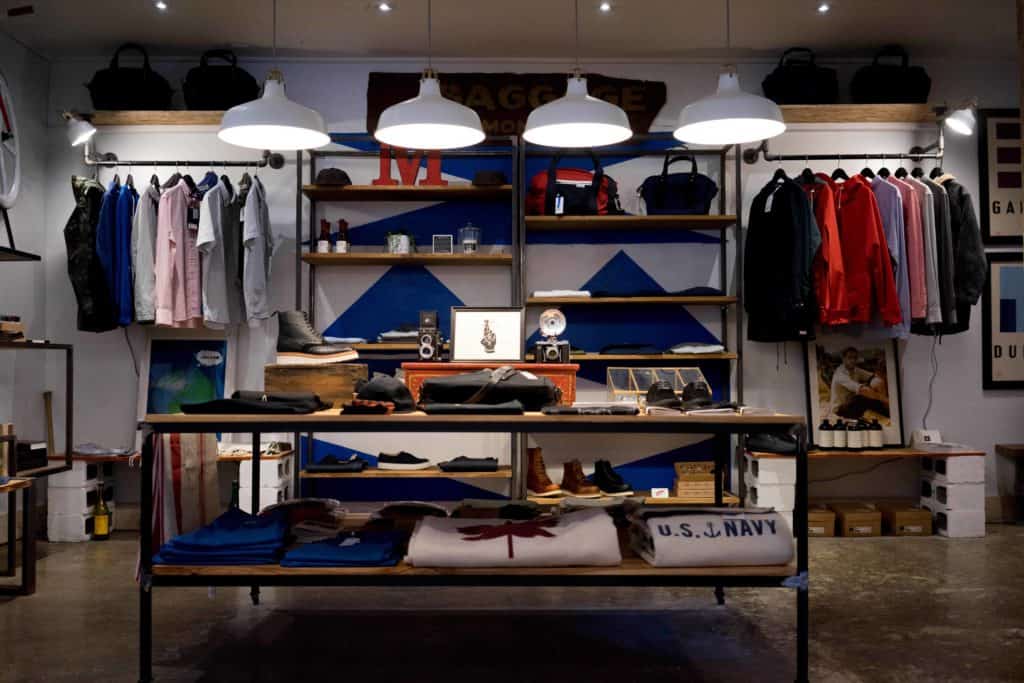In the era of e-commerce, we explore how retail stores are embracing an omnichannel strategy complete with unique in-store experiences to stay relevant.
As e-commerce continues to rise and consumers become more accustomed to checking prices and purchasing products online, traditional brick and mortar retailers have been facing serious competition from their online counterparts. At the same time, the next generation of consumers, the much-discussed Millennials, are focusing their spending on experiences rather than goods, a habit which has also been negatively impacting traditional retailers.
The results of this shift in consumer behavior are already noticeable. Brands without a strong online presence have been forced into administration, leading the UK high street into crisis. In the last 12 months, British labels such as Jaeger and Austin Reed have shut down operations after failing to keep up with their international competitors. Among the many reasons these businesses sank, many retail stores failed to keep up with their store operating costs and lacked an online presence.
Brands with a more healthy operational eco-system are also making adjustments to keep up with the modern, tech-savvy consumer. Tommy Hilfiger announced a number of store closures earlier this year to focus on its growing e-commerce platform. Similarly, Ralph Lauren closed down their Fifth Avenue Polo store to incorporate all its divisions within their Madison Avenue flagship. BCBG, the US-based contemporary label known for its trend-driven pieces, shut down 120 stores and began a complete strategy overhaul.
‘Like so many other great brands, BCBG has been negatively impacted by the growth in online sales and shifts in customer shopping patterns and, as a result, has too large a physical retail footprint. In order to remain viable, the company — like so many others in its industry — must realign its business to effectively compete in today’s shopping environment,’ said a company representative.
This emerging pattern highlights that high street or affordable luxury brands whose products aim to offer customers instant gratification are more likely to thrive online, rather than in a traditional retail environment. In the case of Tommy Hilfiger, his see-now-buy-now shows and capsule collections with supermodel and Instagram influencer, Gigi Hadid, resulted in immediate clicks and quick conversion rates. Therefore, it makes sense for the brand to shift its focus from brick-and-mortar locations, and focus its future on online e-commerce.
Hilfiger is also taking notice of the increasing shift to mobile e-commerce. The designer is thus partnering with mobile commerce platform Predict Spring to create a mobile app for the European market. The app will allow customers to purchase both the classic Hilfiger collection and Tommy x Gigi collection directly from Instagram, as well as provide access to a range of membership perks such as loyalty rewards, promotions, and event invitations.
It’s not all bad news for retailers. E-commerce might be taking a large proportion of stores' sales, but there still seems to be a place for traditional retail stores, provided that they have a clear sense of purpose and a unique experience to offer the consumer.
Missguided, the fast fashion e-tailer targeting Millennials and Generation Z is opening up retail locations after receiving a continuous demand from customers. The stores, located at Westfield Stratford and Bluewater Shopping Centers, aim to create a synergy between the company's digital platform and its retail locations through services such as click-and-collect. They also focus less on filling the shop floor with product and more on creating a unique environment that represents the spirit of the brand; in the case of Missguided, this means playful neon signs, pink car installations and paper dollar signs hanging from the ceiling.
A large number of brands have tried to translate the concept of experiential retail to suit their needs and respective audiences; activewear label Lululemon offers in-store yoga classes, Burberry and Ralph Lauren have incorporated cafés in their Regent Street flagships, and Selfridges hosts seasonal in-store campaigns that are promoted and showcased through its windows. One of Selfridges’ biggest campaigns to date paid tribute to Shakespeare with custom-designed windows, in-store music performances and a partnership with the Royal Academy of Dramatic Art for a two-week residency. Such initiatives give customers an incentive to visit a store and make their purchases within the store environment.
Embracing an omnichannel approach where the physical and the digital works together is also key, particularly when it comes to luxury retail.
Matchesfashion.com, whose largest portion of the business comes from online sales, continues to operate physical stores in key locations such as Marylebone and Notting Hill. Along with the physical store locations, the brand also has a private townhouse for one-on-one appointments and events. In the stores, sales assistants are supplied with iPads, showing clients alternative merchandise from the Matches site, resulting in 50 percent of in-store retail sales coming from merchandise that isn't even on the shop floor.
While the rise of e-commerce has made it more difficult for retailers to survive, opportunities still exist for those who use retail space to engage the consumer and find ways to embrace the world of e-commerce with the physical experience.
